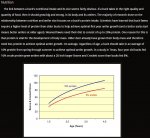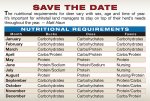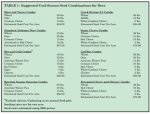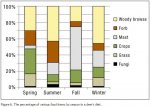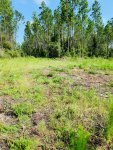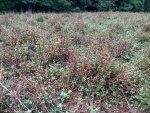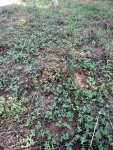Henry Road
UAEC
Before I ask about the Oats and Rye - here's where we are
Typical South Georgia Coastal Plains planted pines habitat.
We have two main plots just over an acre a piece and one about 1/2 acre that sits in a bottom. I have tried to do the "poor man's" no-till method of planting. After bringing in the bulldozer to push the stumps out (which might have been too aggressive - think I pushed away my topsoil?). I took soil samples and poured the recommended lime. For my planting process I have basically put herbicide on existing vegetation, mowed the dead veg, broadcast seed (usually store bought blend), and called it a day. I did add a cultipacker to the process last year and that help some of the germination. Planted spring and fall for the last 3 years. There is some living root in the fields but lots of bare sandy ground and we have yet to have a flush stand of anything we have planted - If the deer would eat dog fennel and fire weed - I'd be in business!
If I had a grain drill or lived in a county with agriculture or had access to borrow or rent a drill there is no doubt that's the way to go. But this fall I am going to have to get the seed in the ground (BIG problem with turkey and birds eating a lot of my seed).
This year - herbicide - (wait a week) light tillage - broadcast seed - cultipack?
I've got my pH right and I am going to focus on getting those two main plots just as plush as I can.
Now what to plant - If you have ever read of listened to Jeff Sturgis - that is where I got this idea. And sounds like if I want plush - this might be the way to go.
He recommends planting Oats (50#) and Austrian Winter Peas (50-100#) 60 days prior to first frost. That would be Mid September for me. Two weeks after that planting come in and broadcast 100# of cereal rye and 4-5 weeks after initial planting date broadcast another 100# of rye. The idea is to layer the growth - the oats and AWP take the initial browse pressure and the oats will die after the frost and the layered rye will provide a lot of green attraction all the way through the season.
Thoughts? Anybody ever tried something like this? I'm also interested to hear if anyone has any no-till no drill experience to share?
Thank
https://www.whitetailhabitatsolutions.com/blog/winter-rye-layered-food-plot-progression
Typical South Georgia Coastal Plains planted pines habitat.
We have two main plots just over an acre a piece and one about 1/2 acre that sits in a bottom. I have tried to do the "poor man's" no-till method of planting. After bringing in the bulldozer to push the stumps out (which might have been too aggressive - think I pushed away my topsoil?). I took soil samples and poured the recommended lime. For my planting process I have basically put herbicide on existing vegetation, mowed the dead veg, broadcast seed (usually store bought blend), and called it a day. I did add a cultipacker to the process last year and that help some of the germination. Planted spring and fall for the last 3 years. There is some living root in the fields but lots of bare sandy ground and we have yet to have a flush stand of anything we have planted - If the deer would eat dog fennel and fire weed - I'd be in business!
If I had a grain drill or lived in a county with agriculture or had access to borrow or rent a drill there is no doubt that's the way to go. But this fall I am going to have to get the seed in the ground (BIG problem with turkey and birds eating a lot of my seed).
This year - herbicide - (wait a week) light tillage - broadcast seed - cultipack?
I've got my pH right and I am going to focus on getting those two main plots just as plush as I can.
Now what to plant - If you have ever read of listened to Jeff Sturgis - that is where I got this idea. And sounds like if I want plush - this might be the way to go.
He recommends planting Oats (50#) and Austrian Winter Peas (50-100#) 60 days prior to first frost. That would be Mid September for me. Two weeks after that planting come in and broadcast 100# of cereal rye and 4-5 weeks after initial planting date broadcast another 100# of rye. The idea is to layer the growth - the oats and AWP take the initial browse pressure and the oats will die after the frost and the layered rye will provide a lot of green attraction all the way through the season.
Thoughts? Anybody ever tried something like this? I'm also interested to hear if anyone has any no-till no drill experience to share?
Thank
https://www.whitetailhabitatsolutions.com/blog/winter-rye-layered-food-plot-progression




